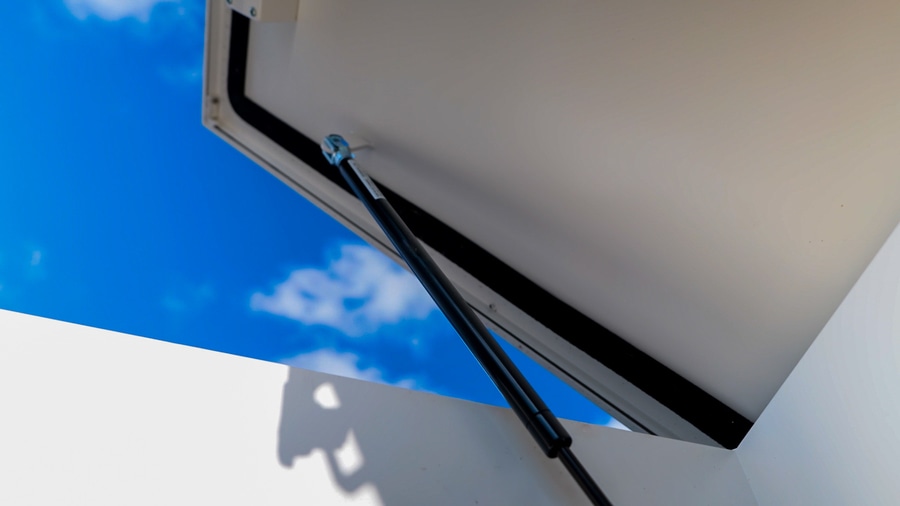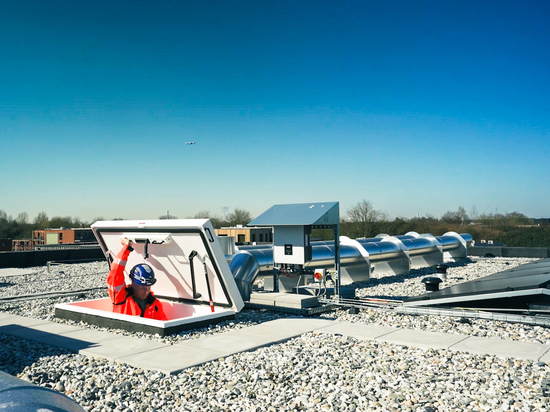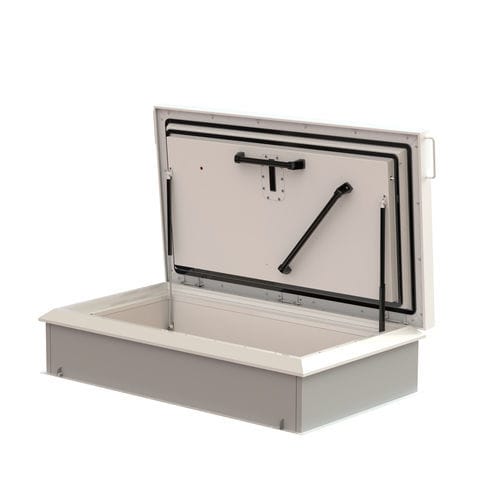
#White Papers
Flat Roof Window vs. Roof Access Hatch
What is the Best Choice for Your Project?
When designing or renovating a building with a flat roof, you may need to choose between a flat roof window or a roof access hatch. Both solutions have their own applications and advantages, depending on the functional requirements of your project. Do you need additional daylight and ventilation, or is safe roof access required for maintenance work? We list the differences below.
What is a flat roof window and what is it used for?
A flat roof window is a glazed opening in a flat roof that allows additional daylight and, in some cases, ventilation. This type of window is often used in residential buildings as an alternative to traditional plastic roof domes.
Types of flat roof windows
Fixed flat roof window – Provides daylight but cannot be opened.
Opening flat roof window – Manually or electrically operable for ventilation.
Walk-on flat roof window – Suitable for roof terraces and intensive use.
What is a roof access hatch and when do you need one?
A roof access hatch provides safe access to the roof for maintenance, inspections, or emergency evacuation. Roof hatches are commonly used in commercial buildings, apartment complexes, and industrial environments where rooftop installations such as ventilation systems, solar panels, or cooling units are located. Glass roof hatches are also ideal for access to a roof terrace.
Types of roof access hatches
Standard roof hatch – For occasional roof access, e.g., for maintenance.
Roof hatch with ladder, scissor stair, or fixed staircase – For frequent access, such as for service technicians.
Large roof hatches – For moving materials or equipment onto the roof.
Glass roof hatches – Ideal for additional daylight, ventilation, and access to a roof terrace.
Staka roof hatches are made from high-quality stainless steel with a robust construction for long-term durability. Quality you can trust. Staka also offers complete solutions for safe and efficient roof access, integrating roof hatches seamlessly with stairs.
Flat Roof Window vs. Roof Hatch: Key Differences
Feature Flat Roof Window Roof Access Hatch
Purpose Daylight and ventilation Roof access for maintenance and safety, daylight and ventilation (glass roof hatches)
Usage Homes, offices Offices, commercial buildings, utilities, apartment complexes, buildings with rooftop installations, homes
Construction Typically made of PVC and/or aluminium High-quality, durable stainless steel (Staka roof hatches), aluminium (other manufacturers)
Material Comparison: Flat Roof Window vs. Roof Hatch
Flat roof windows are often made from plastic and/or aluminium, whereas roof access hatches are frequently made from stainless steel.
Stainless Steel (Used in Staka Roof Hatches)
✅ Advantages of Stainless Steel:
Extremely durable – Long lifespan and resistant to harsh weather conditions.
Corrosion-resistant – Ideal for humid or industrial environments.
High load capacity – Stronger than aluminium or PVC, making it suitable for intensive use.
Fire-resistant – Higher melting point and better fire resistance than aluminium or PVC.
Low maintenance – Wear-resistant and requires little upkeep.
❌ Disadvantages of Stainless Steel:
Heavier – May require a stronger roof structure.
More expensive – But offset by durability and low maintenance.
Aluminium & PVC (Common in Flat Roof Windows)
❌ Disadvantages of Aluminium:
Weaker than stainless steel – Less load capacity.
Potential for thermal bridging – Conducts heat and cold, requiring thermal breaks for insulation.
Less suitable for industrial applications – More prone to wear under heavy loads or chemical exposure.
❌ Disadvantages of PVC:
Less strong than aluminium and stainless steel – Not suitable for heavy loads.
Prone to deformation – Expands or contracts in extreme temperatures.
Shorter lifespan – Particularly when exposed to UV radiation and temperature fluctuations.
When Should You Choose a Roof Access Hatch?
Your building has rooftop installations that require maintenance.
Safety is a priority, and you need a durable, robust solution.
Regular or permanent roof access is required for service technicians.
Your building requires intensive use of the roof hatch.
Corrosion resistance and security are key factors.
When Should You Choose a Flat Roof Window?
The weight of the structure needs to be minimised.
You need an economical solution for daylight and ventilation.
Roof access is not required and does not meet building regulations.
The Right Choice for Your Project
For daylight and ventilation → Flat roof window, glass roof hatch
For roof access and safety → Roof access hatch
Do you need safe and accessible roof access for maintenance or inspections? Then a secure and efficient solution, such as a roof access hatch with a ladder or staircase, is essential.
Looking for a durable and secure roof access solution? Contact Staka for professional advice and complete roof access solutions, or configure your own roof hatch easily.





